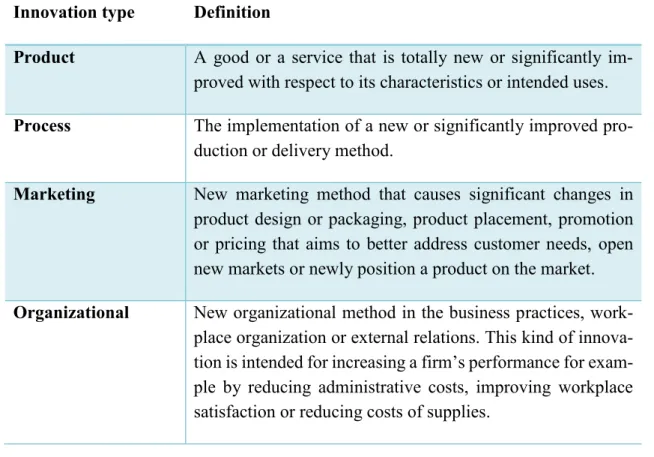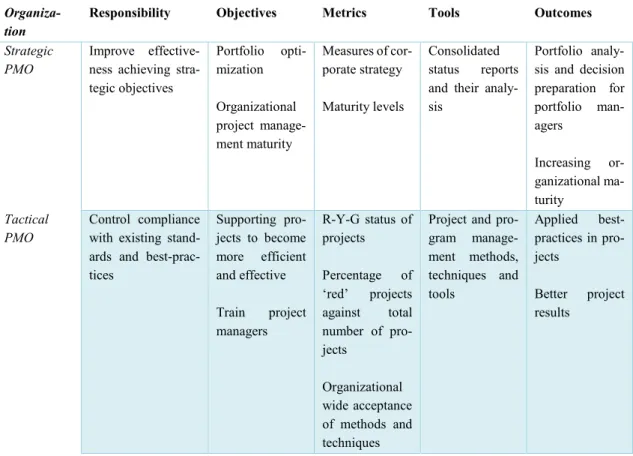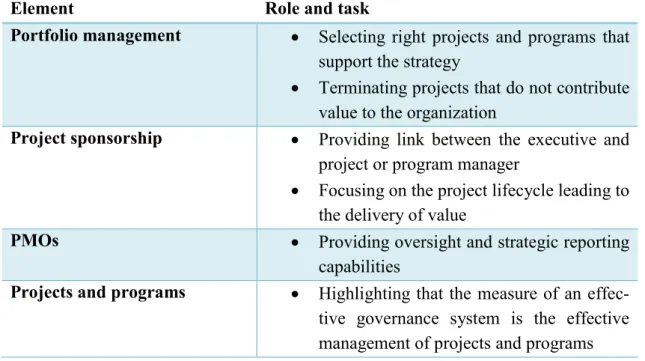The topic needs to be further addressed so that best practices for driving innovation in project-based organizations can be developed. The results of this research can be used in project-based organizations to support the building or redefinition of innovation project governance in an organization.
INTRODUCTION
- Background
- Research Questions and Objectives
- Research Context
- Case Companies and Methodology
- Structure of the Thesis
The research concentrates on the innovation management mechanisms of the case companies whose operations concentrate on project business. Recommendations for the case companies on how to improve their innovation management are given.
LITERATURE REVIEW
The Main Themes
- Project and Project-based Organizations
- Project Portfolio and Program
- Project Governance
- Portfolio and Program Governance
- Innovation
- Innovation Governance
- Framework of Innovations in Project-Based Organizations
Project Management Institute, 2013 • Aligning project objectives with the larger organization's strategy. Zwikael and Smyrk, 2015 • Roles, responsibilities and interaction hierarchy involving key players:. o project owner, o project manager, o steering committee, o project team.

Governance in Project-Based Organizations
- Paradigms for Project and Project Management Governance
- Project Manager, Project Sponsor and Steering Group
- Portfolio Management and Governance
- Governance of Projects: Linking the Governance Between Different
The steering group has many roles, one of which is to establish the management infrastructure for the project. The Project Management Office (PMO) liaises with all levels to ensure the proper flow of information through the organization.

Innovation Project Governance
- Innovations as a Strategic Target
- Creating Innovation Governance for the Organization
- Innovation Project Processes
- Ideation Portfolio Management
- Innovation Portfolio Management Governance
- Different Innovation Governance Models
- Effective Innovation Governance
Deschamps, 2014, p. 74-83) These actions determine the way in which innovation is carried out and maintained by the organization and therefore belong to the most important innovation management duties of the top management team. Choosing the right concept is important for the strategic success of the project. This increase in innovation also has an effect on the overall performance of the organization.
There are several evaluation criteria that can be used when reflecting the effectiveness of the management model. The top management team, starting with the CEO, is sincerely committed to making innovation a core competency of the organization. The model is not overly dependent on the unique skills and personality of one person (eg the CEO).
The governance model is understood by the board, the results of the innovation audit of the organization are presented to the board at least once a year and future issues are discussed (Deschamps, 2014, p. 240).

Synthesis
Senior management should take time to reflect on how the organization's governance model meets these eight success factors and then take corrective action if necessary. The questions in the table provide a checklist that can be used to shape and review the organization's innovation governance model. The questions are intended to help the discussion about innovation activities in the organization and not to give straight answers on how innovation governance should be formed.
What is the innovation system used. processes and structures that govern how the organization searches for ideas, converts them into concepts, and prioritizes funding). The checklist can be used at all project levels, but is best suited for situations where the organization's innovation activities are assessed at the highest level of management. There is no one specific way in which innovation governance should be formed in an organization.
The checklist should facilitate the integration of different levels and aspects of innovation management.

RESEARCH METHOD
- Research Design
- Case Companies
- Data Collection
- Data Analysis
Both companies have grown and continue to grow and hire new talent at a rapid pace. The aim was to give the interviewee an idea about the interview topics and the interviewer an opportunity to get some information on the interviewee's background and knowledge about the research area. The basis of the questionnaire was provided by the UTS researcher who had already conducted several interviews using the form.
The time allotted for one interview was between 1 and 1.5 hours, depending on the interviewee's schedule. Some interviews were also shorter than the allotted time, mainly depending on the interviewee's knowledge of the topics and also some scheduling issues. MS Excel was used as a categorization aid as it suited the amount of research material.
These categories were formed based on the interview structure, the research questions, but also the observations made during the interviews.

RESEARCH RESULTS
Case Company A
- Innovation Environment and Strategy
- Innovation Governance and Processes
- Actors and Roles
- Current Challenges
When the company released a major innovation for their product last year, a large portion of the resources were tied to the development of that new product feature, as that was the number one strategic focus and priority. It is possible that the same kind of team will be formed again in the future. In company A, the organizational structure with regard to innovations and R&D is very flat and all decision makers basically work in the same location.
You could say it's very natural anyway, since we have almost all product development in the same place. Also, all the people making these decisions are in the same place, and from the perspective of one interviewee, it's also easy to discuss and everyone knows what's going on. Therefore, it is sometimes difficult to justify priority decisions when all ideas and functions can be linked to a strategy.
Many of the ideas written in the idea tool are not linked clearly to the strategy.
Case Company B
- Innovation Environment and Strategy
- Innovation Governance and Processes
- Actors and Roles
- Innovation Governance at Different Levels of Project Organization
It's only human that a lot of people need to be able to leave their own fingerprint on their minds, to be okay with that. Not all interviewees believe that there is any resistance or non-contrived thinking in the company. There is some ambiguity as to what is strategic development and what is not, so not all innovations are necessarily included in the program.
This is a new process and none of the projects were in the scaling phase yet. The CIO is a role that was introduced into the company less than a year ago and the responsibility of the CIO is currently mainly in setting up the new innovation processes and vision and this is done by using the Playbook as a resource. One project can be part of more than one block in the 3x3 and then it is more difficult to define the roles and responsibilities.
The strategy must be communicated so that everyone who works in the company understands it and its connection with innovation activities and what they do in their daily work.

Cross-case Analysis
- Innovation Environment and Strategy
- Innovation Governance and Processes
- Actors and Roles
- Innovation Governance at Different Levels of Project Organization
Some interviewees said that there had been some leadership issues at home, but they have been trying to be resolved. Case companies have very different ways of gathering innovation ideas, and the processes and governance of innovation projects vary. In both cases, the other role involves more decisions related to the innovation process and the other is more involved in the content of the innovation.
The innovation strategy can be difficult to link to everyday work, and this has also been noticed in the case companies. If this is not clarified in the future, roles and responsibilities will also remain unclear in the future, harming decision-making and the effectiveness of the projects. One thing is also the possibility that everyone can have their ideas heard, regardless of their role in the organization, personal relationships and networks or pre-.
However, as the new innovation processes, governance and roles in the organization are still being developed, too many conclusions cannot be drawn based on the current situation.

DISCUSSION
Innovation Project Governance at Different Levels of Project Organization
Prioritization is a very important part of portfolio management and the evaluation criteria must be aligned with the innovation strategy so that the decisions can be justified for all role players in the portfolio and project levels. The processes for gathering ideas and decision-making in the early phases of innovation need to be better defined in both case companies. The pursuit of innovations must already be present in the front when ideas are collected.
A dedicated budget can highlight the importance of innovation and help make it a core competency of the company. In small and medium-sized companies, this may be the case, especially if all actors and decision-makers work in the same place and meet regularly and also unofficially between meetings. Defining how a project contributes to the innovation strategy will help the project manager and team commit to the project and also help evaluate the project at the portfolio level.
This should be reviewed from time to time in the case organizations, for example now that there is a new CIO role in company B.
The Revised Innovation Governance Checklist
This includes open innovation decisions and the sourcing of innovation activities in the organization. Second, there are questions about the role that takes primary responsibility for innovations in the organization as well as the supporting role. The innovation system includes processes and structures that define how the organization searches for ideas, turns them into concepts and prioritizes funding, and links to other categories in the checklist.
Idea generation and idea collection relate to the definition of the innovation system and the processes and tools used in the early stage of innovation to ensure the generation and collection of comprehensive ideas. The governance paradigm that influences the background is also assessed here and can determine how project governance is constructed. Company B had its innovation process defined, but practices differed between different projects according to the type of innovation.
From a case-research point of view, the most important thing in connecting all levels is to successfully communicate the strategy to all levels and everyone in the organization.

CONCLUSIONS
- Academic Contribution
- Managerial Implications
- Evaluation of the Research
- Future Research
It can be used as a whole to define the overall framework for governance of the innovation project or applied in part if a certain area of innovation, such as the idea generation phase, needs to be improved. This study helped to find out what kind of project governance mechanisms medium-sized companies apply when pursuing innovation. This study has identified factors that should be considered when establishing innovation project governance for an organization.
The innovation project governance checklist, presented in chapter 5.3, is a good starting point that the case organizations can use when forming innovation governance structures. Innovation project management is a very broad topic and there are certainly shortcomings in this model, but it can help top management approach the topic if innovation is to become a core competency of the company. This research focused only on medium-sized companies, so there is a need for research into innovation governance and project governance research in small and large organizations and how the level of governance differs.
Front-end definition of projects: Ten paradoxes and some reflections on project management and project management.






